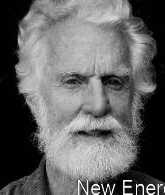Inventor
Interests: Cold Fusion
In March 1989, Roger Stringham of First Gate Energies, in Hawaii, USA pioneered the method of using acoustic cavitation to produce the cold fusion effect. Acoustic cavitation uses ultrasonic waves to create gas bubbles within the heavy water. Stringham was the first to use the term "sonofusion" to describe how this phenomenon creates energy in cold fusion experiments.
This work is not be confused with other experiments in the hot fusion field which also use a form of acoustic cavitation, called "acoustic inertial confinement fusion." The two types of research are markedly different.
The key differences with the cold fusion method, sonofusion, is that the effect is directly related to an as-yet-unknown interaction between heavy water and a host metal, such as palladium. The hot fusion method does not employ a host metal. The other key distinction between the cold fusion and hot fusion method is that the cold fusion method produces no deadly neutron radiation, as occurs in hot fusion. -- Steven B. Krivit http://www.newenergytimes.com/v2/views/StringhamR/StringhamR.shtml
Stringham also founded E-Quest Sciences, Inc. of Palo Alto, California.
Articles:
- "Ejecta Sites And DD Fusion Events," APS March Meeting, Baltimore, MD, Paper W41.00008, p. 1-14, (March 13-17, 2006)
- "Cavitation and Fusion," Tenth International Conference on Cold Fusion. 2003. Cambridge, MA: http://www.lenr-canr.org/.


